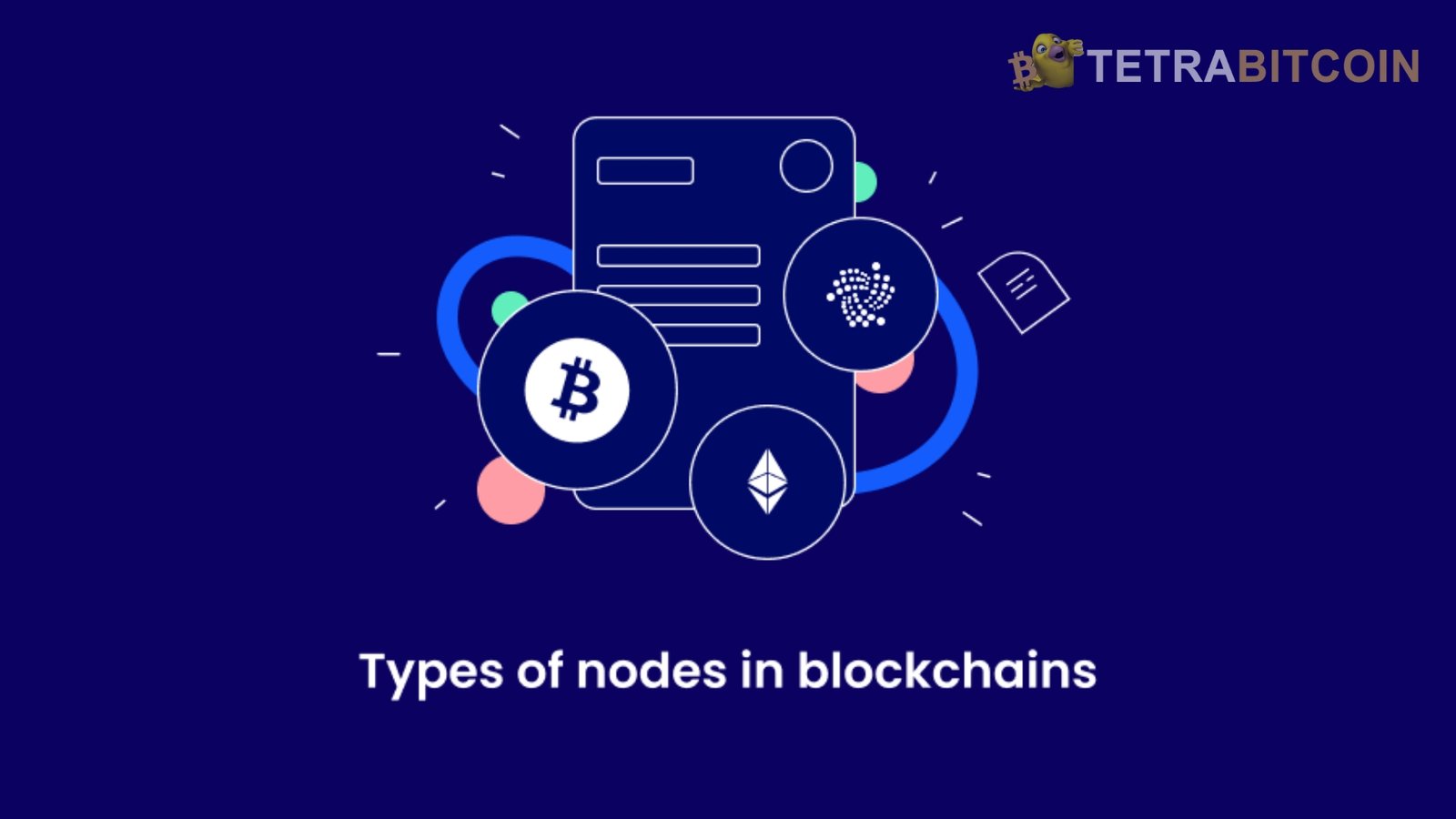Bitcoin Node. To validate and publish transactions on the blockchain, Bitcoin BTC $61,504 operates on a decentralized peer-to-peer network comprised of computers, or nodes, that execute the Bitcoin software and adhere to a set of consensus rules known as proof-of-work (PoW). Blockchains can be considered trustless methods since no third party is involved.
For more conventional forms of payment, third parties such as banks and payment processors verify the buyer’s funds to ensure the sale can go through. A decentralized network of node operators and miners validates transactions on the Bitcoin blockchain without censorship or permission, replacing traditional third-party payment methods.
One must first learn what nodes are and how they function to comprehend the process of settling a transaction. Downloading the Bitcoin Core software makes anyone a potential Bitcoin node operator, adding another layer of decentralization, transparency, and immutability to the blockchain.
What is a Bitcoin Node?
The Bitcoin network relies on nodes. To address the double-spending problem wherein users try to spend their Bitcoin twice fraudulently, these nodes constantly scan the blockchain and its transactions.
A node is any computer joining the Bitcoin network after downloading the software. Bitcoin Core, the most widely used client and software implementation of full nodes, has its most recent release on GitHub. By rejecting transactions that violate consensus criteria, nodes add to the network’s security and maintain the full history and chronology of the Bitcoin blockchain. Think of it as a ledger. Users can connect confidentially, making it difficult to reveal or count the precise number of active Bitcoin nodes.
Various sources provide highly contradictory figures. Certain sources estimate the number of Bitcoin nodes to be more than 13,000. However, well-known Bitcoin Core engineer Luke Dash Jr. predicted that 83,000 nodes would be operational in January 2021, but that number dropped dramatically to around 50,000 in 2022.
The data is particularly concerning because more than 200,000 Bitcoin nodes were active during the 2017 bull market’s peak. The greater the number of nodes participating in the Bitcoin network and maintaining connections, the stronger and more decentralized it grows.
What are Nodes in a Blockchain?
The first blockchain, Bitcoin, is the structural basis for all subsequent blockchain networks. Consequently, most blockchains can be better understood by familiarizing oneself with the ideas of Bitcoin nodes. They are functionally identical; the only difference is that they use distinct protocols with different regulations.
Nodes in a blockchain network primarily check that blocks and transactions are valid and adhere to protocol standards. They also need to ensure the network and data are reliable. Nodes known as controller nodes and miner nodes are common in blockchain technology. They utilize more resources to power the network and get larger block rewards. Unlike ordinary or miner nodes, controller nodes do not contribute new blocks or transactions to the blockchain. Later in the piece, you’ll find a more detailed description of these nodes.
How do Blockchain Nodes Work?
Transactions are broadcast to the network after being validated by nodes. When a transaction is marked as “pending” on the blockchain, miners or mining pools take it up, adding it to the distributed ledger.
Miners group all the outstanding transactions into blocks rather than verifying each individually. To ensure the confirmed block is legitimate and follows the network’s rules, it is transferred back and forth across the whole network. After a block is validated, the nodes add it to the chain of blocks before it, completing the settlement of transactions and forming a blockchain.
Types of Blockchain Nodes
Transaction verification and broadcasting require significant time and resources, so nodes are separated into lightweight and complete nodes to accelerate the validation process. Full nodes download the full blockchain history to verify every transaction, while lightweight nodes download the key header data. Lightweight nodes are not as secure as full nodes.
Full nodes
These nodes are known as full nodes because they check for compliance with the Bitcoin protocol’s regulations. The Bitcoin network relies on full nodes to verify the legitimacy of all transactions and avoid the problem of double spending. This implies that the bitcoins processed cannot already be spent elsewhere.
A complete node must download all transactions, old and new, and the block headers. It must also store data on the output of all unspent transactions until they are spent. Full nodes must verify compliance with Bitcoin’s consensus rules by downloading the full blockchain history, including all blocks and transactions.
For example, they will ensure compliance with the requirement that each block can only generate a certain amount of Bitcoin (now 6.25 until the next halving in 2024). Within a single blockchain, they can prevent a transaction’s output from being spent twice or verify that blocks and transactions are in the correct data format. A block or transaction that doesn’t follow the consensus rules will be rejected.
Full nodes in Bitcoin are like servers. If you operate your node, your server is responsible for broadcasting transactions to the network. You will depend on the server to verify your transactions without your node. Running a node is the way to go if you want complete autonomy and control over your Bitcoin.
Light Nodes
Light nodes serve as wallets and link to full nodes; they only download the essential data from finished transactions. They save the block header, a snapshot of each block that includes the mining time, a hash of the preceding block, and the nonce (a unique identifier) of all transactions that have occurred up to that point.
Light nodes, in contrast to full nodes, only process small blocks of the blockchain. They are less expensive than full nodes and perfect for nodes with limited storage or processing capacity. Simplified Payment Verification (SPV) assigns checking if a block contains a particular transaction to a light node. It does not verify every transaction or hold a complete copy of the blockchain, but it does help maintain the network’s decentralization.
Mining Nodes
To mine Bitcoin and create new blocks to add to the blockchain, mining nodes do more than store the full blockchain; they also use mining hardware and software to solve complicated computational tasks.
Using a regular old home computer’s CPU as a mining node was still possible until 2010. However, as the Bitcoin network grew tremendously, mining the cryptocurrency with a CPU became insufficient, necessitating more costly and energy-intensive mining hardware. Because mining nodes compete to be the first to generate a new block, for which they now receive 6.25 BTC, they are fiercely competitive.
Bitcoin Full Node vs. Bitcoin Miners’ Node
Although they serve distinct purposes, full and miner nodes are vital to the Bitcoin network. Although miners need to run nodes, full node runners are not required to be miners. While most Bitcoin nodes are responsible for validating transactions and blocks, a few nodes called “miners” can solve complicated mathematical problems to create new blocks and add transactions to them.
Miners don’t have much sway, contrary to popular belief. Although rearranging the blockchain and adding or removing transactions could be possible, the sheer amount of computer power required would make it unfeasible. Full nodes depend on miners solely for the few functions mentioned before, so even if a powerful miner attacked Bitcoin, it wouldn’t be able to alter or destroy Bitcoin entirely.
Other Types of Blockchain Nodes
Full nodes designated as “archival” can receive connections from other nodes in the network and can upload older blocks to other nodes. When controlling who has access to what data on the blockchain is necessary, archival nodes can step in as authority nodes. Under these circumstances, only authoritative nodes can grant permission for additional nodes to become part of the Blockchain network.
Due to memory constraints, pruned complete nodes cannot store as much data. They are full nodes that download the entire blockchain; however, once they reach a certain limit, they remove the oldest block to make room for the new ones and keep the blockchain size constant.
Full controller nodes’ principal roles are to validate transactions and maintain the blockchain ledger. They cannot contribute blocks to the blockchain. Extra nodes include computers or software known as “lightning nodes” that ink uses to communicate with the main blockchain and Lightning Network. Lightning nodes differ from Bitcoin full nodes in that, unlike Bitcoin nodes, they only verify transactions that interact directly with them. This means that Lightning nodes do not validate every blockchain transaction.
How to Set up and Run a Full Node
Multiple clients provide the program to download the full history of the Bitcoin blockchain. However, Bitcoin Core is associated with the largest number of complete nodes. After installing Bitcoin Core and waiting for it to replicate the whole blockchain from other nodes, your node will be prepared to validate blocks independently.
The official Bitcoin website has instructions on how to set up and run a Bitcoin node on several operating systems. You can use these instructions to set up a new node via the Initial Block Download (IBD), which allows nodes to synchronize with the network during the initial run. During the download, Bitcoin Core will require a lot of storage space; however, there are a few simple techniques to reduce storage usage. Alternatively, you might use the cloud to host your nodes. Installing Bitcoin Core and connecting to a cloud provider allows you to outsource storage and processing resources.
Why is it Important to Run Your Node?
Even though operating a Bitcoin node does not offer a financial incentive, there are still a number of benefits associated with it, which will be discussed further below.
-
When compared to depending on servers operated by third parties to conduct your transactions, operating a complete node provides a higher level of privacy and anonymity. Services that act as intermediaries have the potential to reveal your wallet address and put your privacy at risk.
-
Your Bitcoin holdings are completely within your control.
-
Contribution to the network’s security and integrity to ensure that all of the rules within the Bitcoin protocol are adhered to stringently.
-
In the event of forks, you must determine which blockchain you wish to adhere to. Therefore, if substantial changes occur in the blockchain, your node equals having one more vote.
-
Additionally, Bitcoin nodes help prevent double spending by preventing users from attempting to spend the same cryptocurrency twice.
The operation of a Bitcoin node does not result in any significant financial gain; however, other blockchains provide incentives in the form of staking nodes. On the other hand, this is a discussion for a different post focused on blockchain nodes that are not concerned with Bitcoin.

